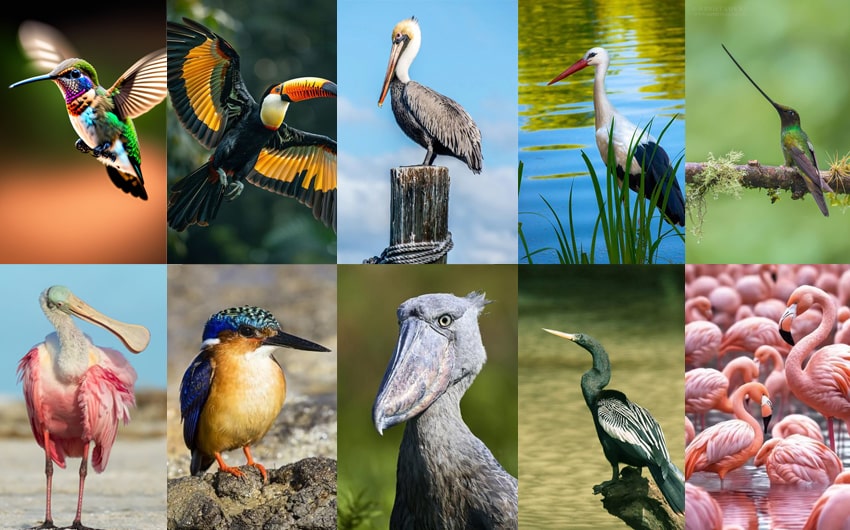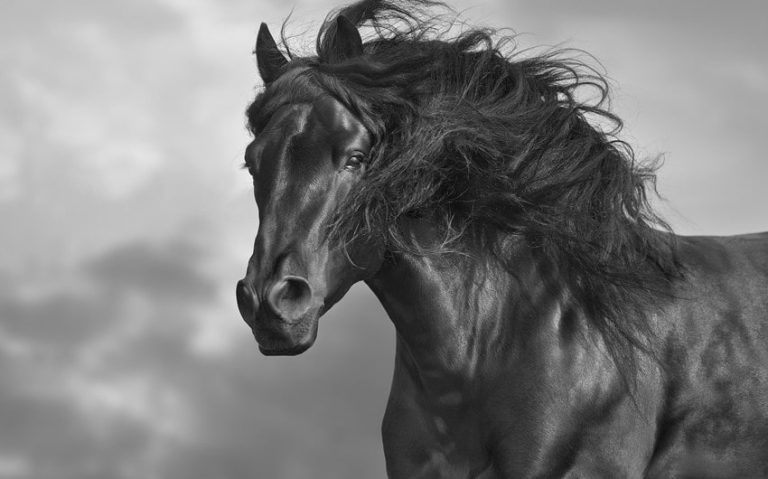20 Amazing Birds with Long Beaks and Their Unique Features
Have you ever noticed how some birds seem to have beaks that are longer than their bodies? These unique adaptations aren’t just for show—they play a crucial role in how these birds survive and thrive. Whether it’s reaching into deep flowers for nectar or catching fish in shallow waters, birds with long beaks have fascinating stories to tell.
In this article, you’ll discover 20 incredible birds whose long beaks are as functional as they are fascinating. Ready to learn more about these amazing creatures? Let’s dive in!
1. Hummingbird

Image Source: Pinterest
Hummingbirds are small yet mighty birds known for their incredible speed and agility. Their long, slender beaks are perfectly adapted to their feeding habits, allowing them to reach deep into flowers to extract nectar. Here’s what makes the hummingbird’s beak so special:
- Adaptation for Nectar Feeding: The long beak of a hummingbird is specifically designed to access nectar hidden deep within flowers. This allows them to feed on a variety of flowers that other birds can’t reach.
- Precision and Speed: Hummingbirds can hover in place while they feed, thanks to their rapidly beating wings. Their long beaks allow them to sip nectar quickly without needing to land, which is crucial for avoiding predators.
- Tongue Mechanics: Inside their long beak, hummingbirds have a specialized tongue that flicks in and out rapidly, collecting nectar through capillary action. This efficient feeding method ensures they get enough energy to fuel their high metabolism.
- Pollination: As they feed, hummingbirds inadvertently transfer pollen from one flower to another, making them important pollinators in their ecosystems.
Hummingbirds are primarily found in the Americas, with the greatest diversity in Central and South America. They inhabit a range of environments, from tropical rainforests to mountain meadows and even urban gardens. Their ability to thrive in such varied habitats is partly due to their long beaks, which allow them to exploit a wide range of nectar sources.
2. Pelican
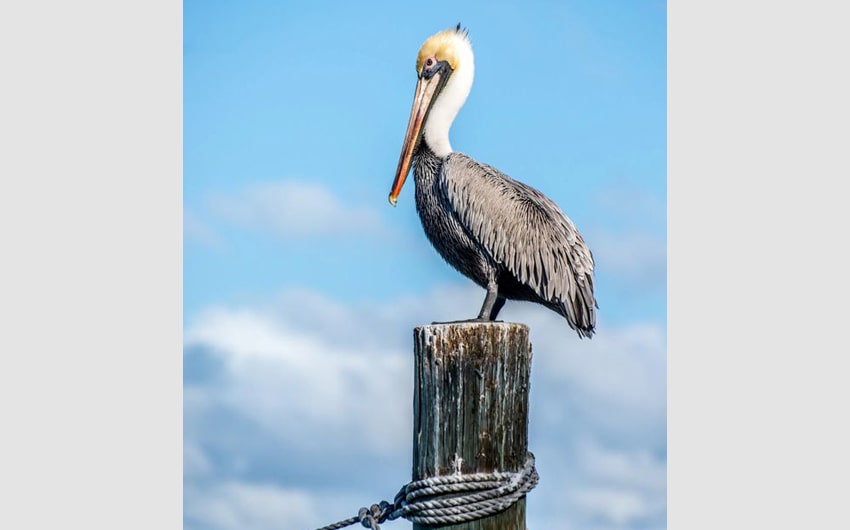
Image Source: Pinterest
Pelicans are large water birds renowned for their massive, elongated beaks, which are equipped with a flexible pouch used for catching and holding fish. Their beaks are not just for show; they are perfectly adapted to their aquatic hunting lifestyle. Here’s what sets the pelican’s beak apart:
- Unique Fishing Technique: The pelican’s beak and pouch work together like a fishing net. They scoop up fish and water, then drain the water by squeezing their pouch against their chest, leaving only the fish behind.
- Versatility in Feeding: While primarily fish-eaters, pelicans can also use their long beaks to snatch up other small aquatic animals, making them versatile hunters.
- Social Feeding Behavior: Pelicans often hunt in groups, working together to drive fish into shallow waters where they can be more easily caught. Their long beaks allow them to capture multiple fish in one scoop, especially when working in coordination with others.
Pelicans are found on every continent except Antarctica, primarily inhabiting coastal regions, large lakes, and rivers. They are especially common in warmer climates where fish are abundant. The adaptability of their beaks to different types of prey and environments allows pelicans to thrive in varied habitats worldwide.
3. Stork
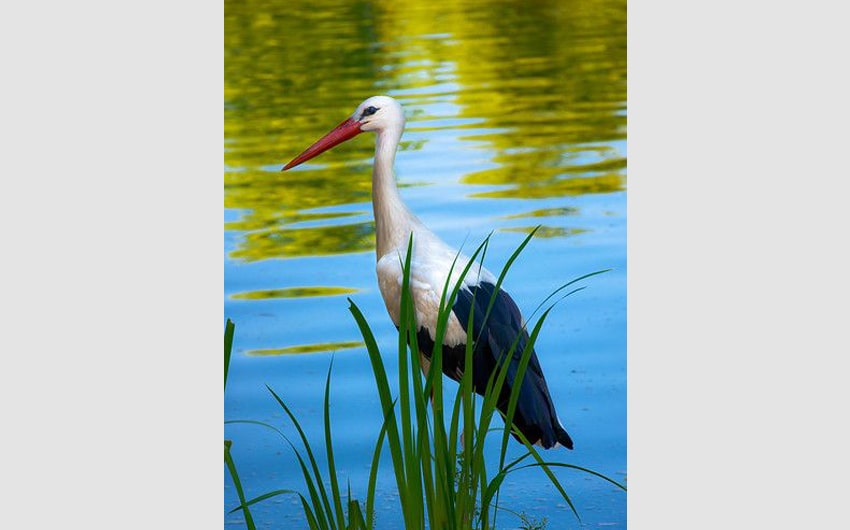
Image Source: Pinterest
Storks are large, long-legged wading birds known for their long, sharp beaks, which are perfect for hunting in wetlands and shallow waters. These beaks are crucial to their survival and play a vital role in their feeding strategies. Here’s what makes the stork’s beak so effective:
- Precision Hunting: The stork’s long, pointed beak acts like a spear, allowing them to quickly and accurately snatch up fish, amphibians, and other small animals from shallow waters or mudflats.
- Versatile Diet: While storks primarily eat fish, their long beaks are also adept at capturing a wide variety of prey, including insects, small mammals, and even snakes. This versatility ensures they can find food in various environments.
- Silent Stalkers: Storks often use their long beaks to probe quietly through water or vegetation, relying on stealth rather than speed. This approach allows them to surprise their prey, which is critical for their hunting success.
Storks are widely distributed across Europe, Asia, and Africa, often found in wetlands, marshes, and along rivers. Some species, like the white stork, are also known to inhabit open fields and even urban areas. Their ability to adapt to both natural and human-altered landscapes is closely tied to the versatility of their long beaks.
4. Sword-billed Hummingbird
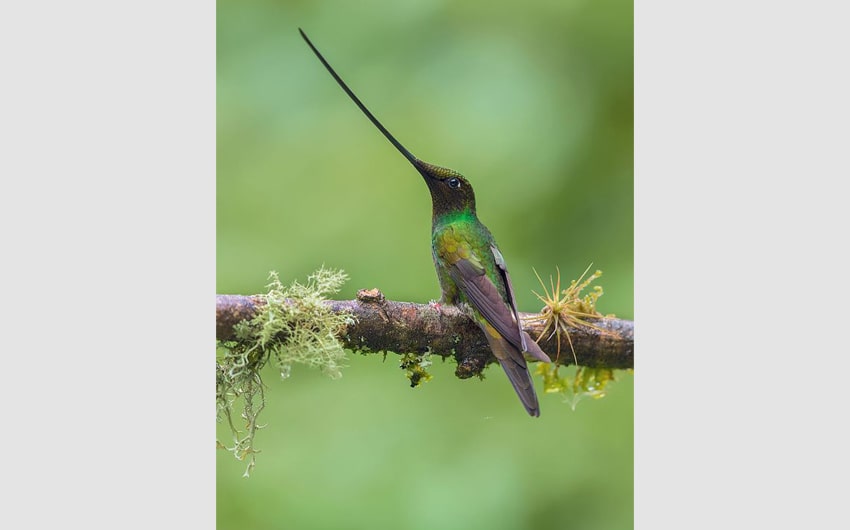
Image Source: Pinterest
The sword-billed hummingbird is a marvel of nature, known for its extraordinary beak that is longer than its entire body. This remarkable adaptation is not just for show; it serves a very specialized purpose. Here’s what makes the sword-billed hummingbird’s beak so unique:
- Specialized for Deep Flowers: The sword-billed hummingbird’s extremely long beak allows it to access nectar from flowers with deep corollas that other birds cannot reach, giving it a niche feeding advantage.
- Aerodynamic Design: Despite its length, the beak is lightweight and aerodynamic, allowing the bird to maintain its incredible agility in flight, which is essential for hovering and feeding on the wing.
- Balance in Flight: The bird’s body is perfectly balanced to accommodate its long beak, ensuring that it can maneuver through the air with precision despite the unusual proportions.
The sword-billed hummingbird is primarily found in the Andean regions of South America, particularly in cloud forests where its favored flowers grow. This bird’s habitat is closely tied to the availability of specific flowering plants, making its long beak a critical adaptation for survival in these unique environments.
5. Ibis
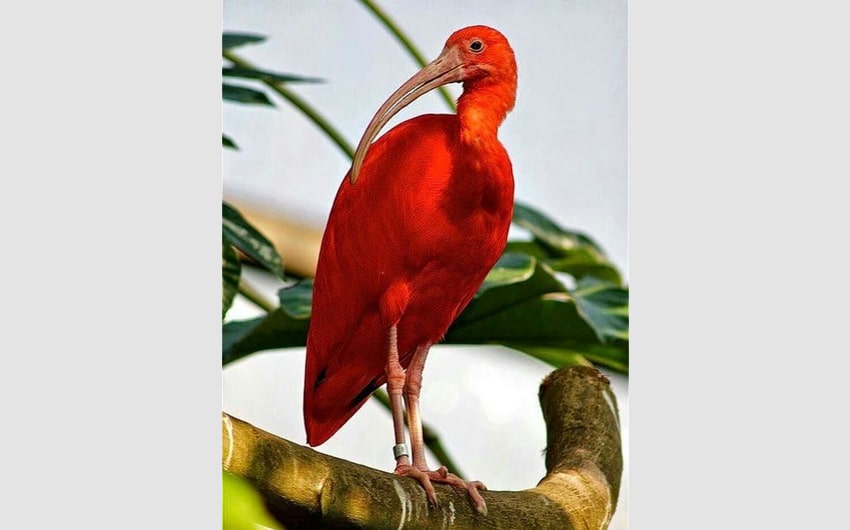
Image Source: Pinterest
Ibises are long-legged wading birds known for their distinctive long, curved beaks. These beaks are not just for appearances; they are highly specialized tools that help ibises thrive in their wetland habitats. Here’s what makes the ibis’s beak so distinctive:
- Curved for Probing: The ibis’s long, downward-curving beak is perfect for probing into mud, sand, or shallow water to find food. This beak shape allows them to detect and extract hidden prey like insects, crustaceans, and small fish.
- Tactile Feeding: Unlike birds that rely on sight, ibises often use their beaks to feel for prey in murky waters. Their beaks are highly sensitive, allowing them to locate food even when it’s out of sight.
- Social Foragers: Ibises often feed in groups, walking through wetlands with their heads down, beaks probing the ground. This behavior allows them to cover large areas efficiently and increases their chances of finding food.
Ibises are found across the world, particularly in warm regions including parts of Africa, Asia, Australia, and the Americas. They are commonly seen in wetlands, marshes, and along riverbanks, where their long beaks are ideally suited for their probing feeding style.
6. Curlew
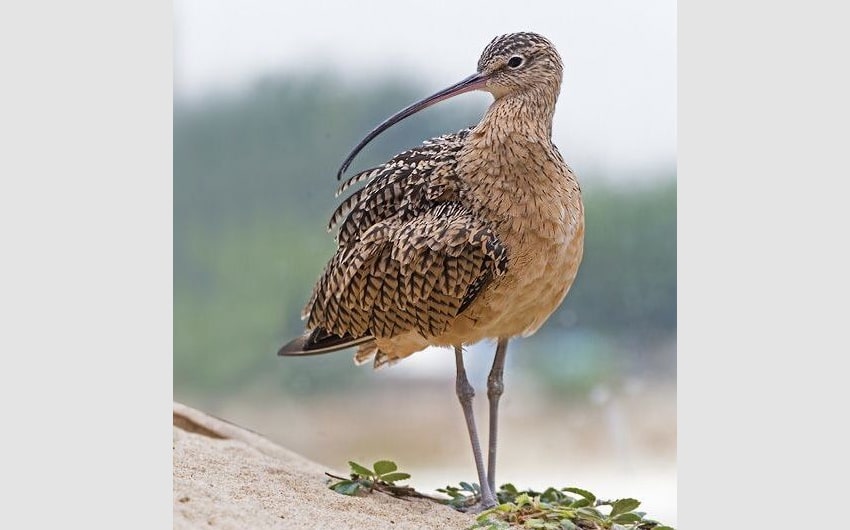
Image Source: Pinterest
Curlews are large wading birds distinguished by their incredibly long, down-curved beaks. These beaks are not just striking in appearance; they are perfectly adapted to the bird’s foraging lifestyle. Here’s what makes the curlew’s beak so effective:
- Probing Deep Mud: The curlew’s long, curved beak is ideal for probing deep into mudflats and soft ground to find invertebrates such as worms, crustaceans, and insects. The curvature allows them to reach prey that other birds can’t access.
- Foraging Versatility: The beak’s shape and length give curlews the flexibility to forage in a variety of habitats, from coastal wetlands to grasslands, enabling them to find food in different seasons and environments.
- Seasonal Feeding: Curlews often migrate, and their long beaks are critical for exploiting food sources in both breeding and wintering grounds. This adaptability is key to their survival during long migrations.
Curlews are widely distributed across Europe, Asia, and North America, particularly in coastal regions and wetlands. Their long, curved beaks are a perfect adaptation to the diverse feeding opportunities found in these environments.
7. Kiwi
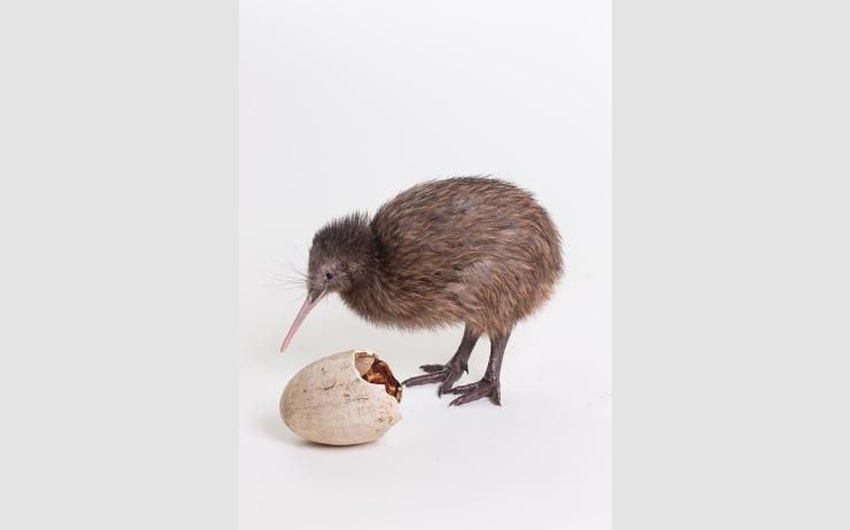
Image Source: Pinterest
The kiwi, a flightless bird native to New Zealand, is famous for its long, slender beak, which is unlike any other bird’s. Here’s what makes the kiwi’s beak so unique:
- Nostrils at the Tip: Unlike most birds, the kiwi’s nostrils are located at the very tip of its beak. This adaptation allows them to sniff out insects and other invertebrates hidden underground, giving them an exceptional sense of smell.
- Nocturnal Foraging: Kiwis are nocturnal, and their long beaks help them forage in the dark. They use their beaks to probe the ground and detect prey by smell and touch, rather than sight.
- Silent Hunters: The kiwi’s beak allows it to hunt silently, minimizing disturbances in its environment and making it more effective at capturing elusive prey.
Kiwis are found exclusively in New Zealand, inhabiting forests, scrublands, and grasslands. Their long beaks are essential for survival in these dense and often dark habitats, where they rely more on their sense of smell and touch than on vision.
8. Toucan
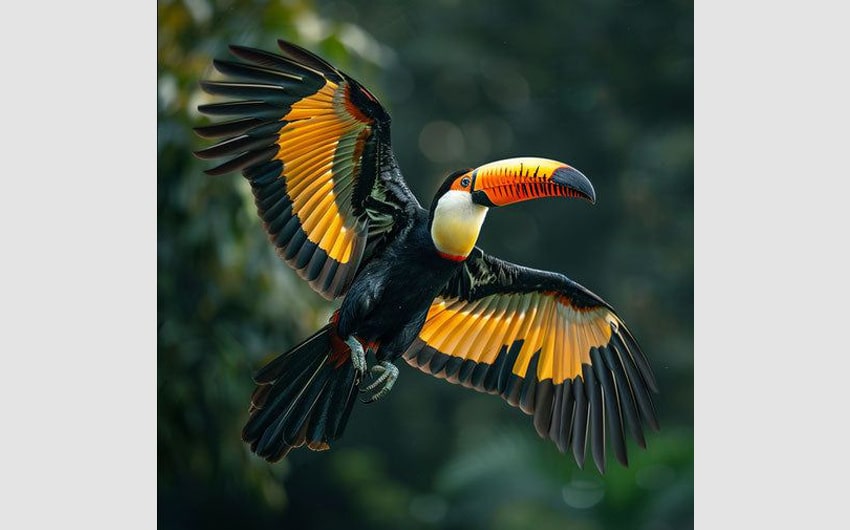
Image Source: Pinterest
Toucans are instantly recognizable by their large, colorful beaks, which are among the longest in proportion to body size in the bird world. However, these beaks are not just for show. Here’s what makes the toucan’s beak so special:
- Fruit-Picking Precision: The toucan’s long, lightweight beak is ideal for reaching and plucking fruit from branches that would be otherwise out of reach. The beak’s serrated edges help them grasp and peel fruit with ease.
- Thermoregulation: Surprisingly, the toucan’s beak plays a role in regulating its body temperature. The large surface area allows for heat dissipation, helping the bird stay cool in tropical environments.
- Communication and Display: The toucan’s brightly colored beak is also used for social interactions, including courtship displays and signaling to other toucans. Its vibrant colors make it a visual standout in the dense forest.
Toucans are native to Central and South America, primarily found in tropical and subtropical forests. Their long beaks are perfectly adapted to their fruit-heavy diet and play a crucial role in their ability to thrive in these lush environments.
9. Avocet
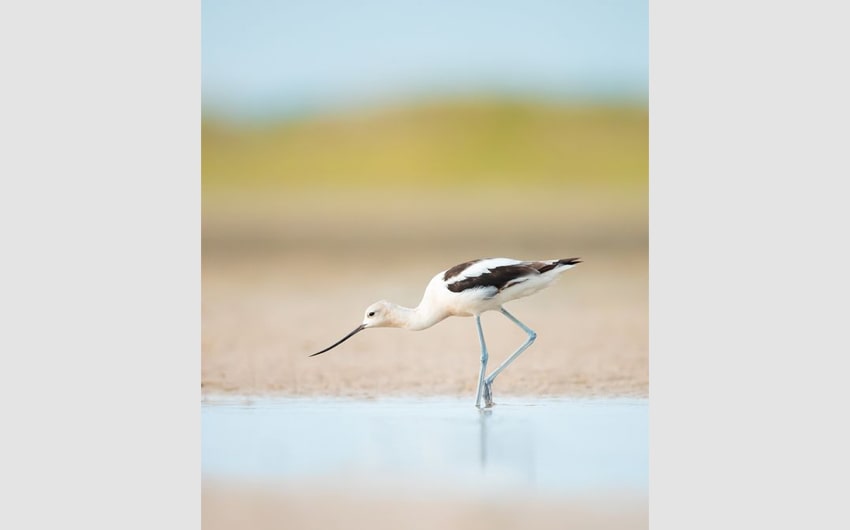
Image Source: Pinterest
Avocets are elegant wading birds known for their long, slender, upturned beaks. These beaks are highly specialized tools that enable avocets to feed effectively in shallow waters. Here’s what sets the avocet’s beak apart:
- Sweeping Motion Feeding: Avocets use their long, upturned beaks to sweep through water from side to side, skimming for small invertebrates like crustaceans and insects. This sweeping motion is highly effective in shallow waters where food is plentiful.
- Filter Feeding: The unique shape of the avocet’s beak also allows it to filter-feed, sifting through mud and water to capture tiny organisms. This feeding strategy helps them exploit food resources that other birds might miss.
- Group Foraging: Avocets often forage in flocks, using their beaks to create a collective feeding front. This behavior increases their efficiency and helps them cover large areas of habitat.
Avocets are found across Europe, Asia, and the Americas, inhabiting wetlands, estuaries, and coastal regions. Their long, upturned beaks are perfectly adapted to the shallow, muddy environments they frequent.
10. Woodpecker
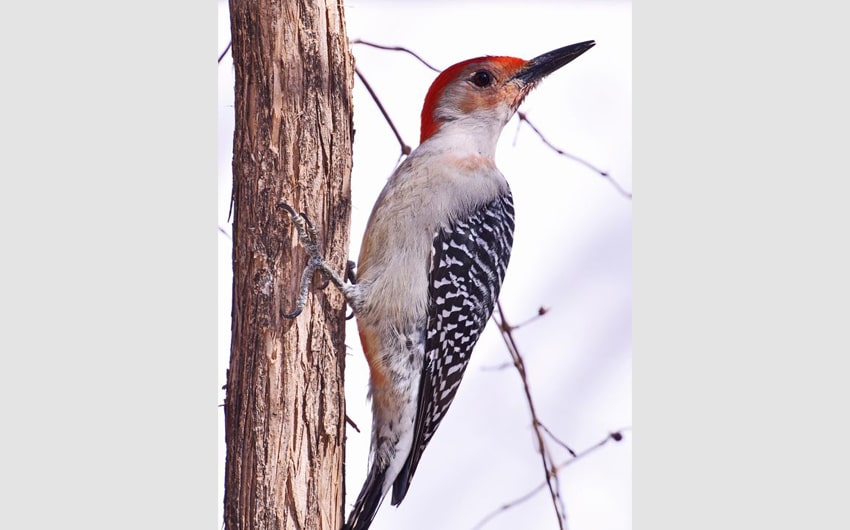
Image Source: Pinterest
Woodpeckers are fascinating birds known for their long, chisel-like beaks, which are perfectly adapted to their unique method of foraging. Here’s what makes the woodpecker’s beak so remarkable:
- Drilling for Insects: The woodpecker’s long, sturdy beak acts as a natural drill, allowing them to bore into tree bark to access insects and larvae hidden within. This ability is critical for their survival, especially during the winter months when other food sources are scarce.
- Shock Absorption: Woodpeckers have specialized adaptations that prevent brain damage from the repeated impact of pecking. Their beaks are connected to strong muscles and have a spongy structure that absorbs shock, protecting their heads.
- Territory Marking: Woodpeckers also use their beaks to drum on trees and other surfaces, creating loud, resonant sounds that serve as territorial signals. This drumming helps them communicate with other woodpeckers and establish dominance in their area.
Woodpeckers are found worldwide, from dense forests to suburban areas. Their long beaks are essential tools for both feeding and communication, allowing them to thrive in a wide range of habitats.
11. Spoonbill
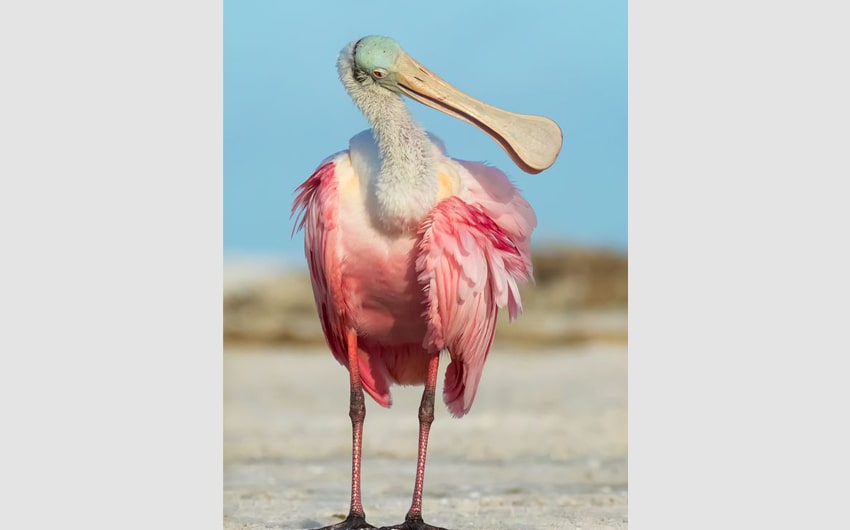
Image Source: Pinterest
Spoonbills are wading birds recognized by their distinctive long, flat, spoon-shaped beaks. This unusual beak shape is a highly specialized tool for feeding in shallow waters. Here’s what makes the spoonbill’s beak so effective:
- Sifting for Food: Spoonbills use their long, flattened beaks to sweep through shallow water and soft mud, sifting for small fish, crustaceans, and aquatic insects. The wide, spoon-like end of the beak helps them scoop up prey efficiently.
- Tactile Feeding: The spoonbill’s beak is highly sensitive, allowing them to detect prey by touch as they sweep it through the water. This tactile feeding method is crucial in murky waters where visibility is low.
- Social Feeding: Spoonbills often feed in groups, and their synchronized sweeping motion can stir up prey, making it easier for the entire group to feed. This social behavior enhances their foraging success.
Spoonbills are found on every continent except Antarctica, primarily in wetlands, marshes, and estuaries. Their long, spoon-shaped beaks are perfectly adapted to the shallow, nutrient-rich waters they inhabit.
12. Heron
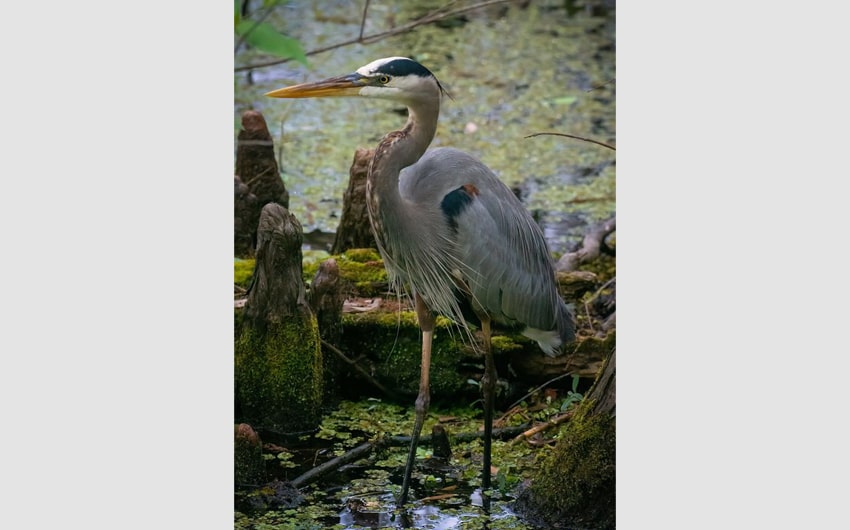
Image Source: Pinterest
Herons are tall, elegant wading birds known for their long, pointed beaks, which are crucial for their hunting lifestyle. These beaks are perfectly adapted to their predatory needs. Here’s what makes the heron’s beak so effective:
- Spear-like Precision: The heron’s long, sharp beak acts like a spear, allowing them to strike quickly and accurately to catch fish, amphibians, and other small aquatic animals. This precise hunting method minimizes the chance of prey escaping.
- Stealth Hunting: Herons often stand motionless in the water, using their beaks to strike swiftly at unsuspecting prey. Their patience and stealth are key to their success, and their long beaks allow them to catch prey with minimal movement.
- Versatile Diet: While fish are their primary food source, herons’ long beaks also enable them to catch a variety of prey, including insects, small mammals, and even birds, making them versatile hunters.
Herons are found worldwide, inhabiting wetlands, rivers, and coastal regions. Their long beaks are essential tools for their predatory lifestyle, allowing them to thrive in diverse aquatic environments.
13. Egret
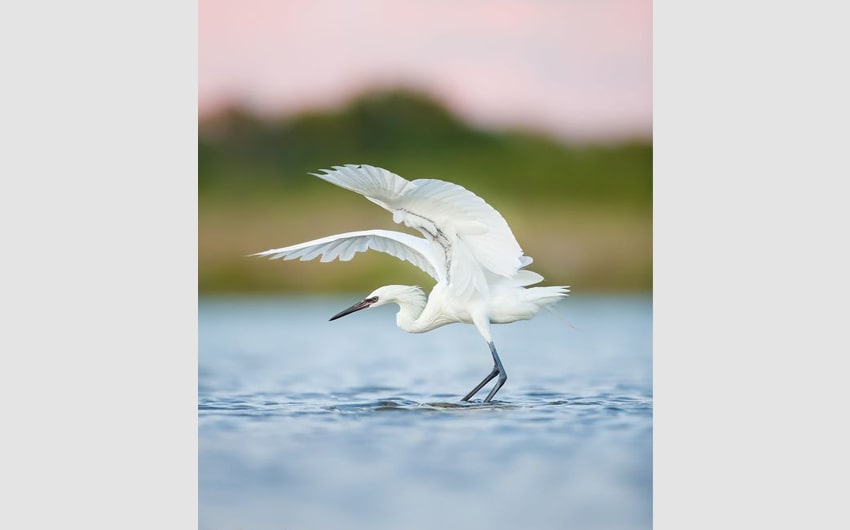
Image Source: Pinterest
Egrets are graceful wading birds similar to herons, known for their long, slender beaks that are perfectly adapted for fishing and hunting in shallow waters. Here’s what makes the egret’s beak so distinctive:
- Precision Fishing: The egret’s long, pointed beak is an excellent tool for catching fish and other small aquatic creatures. They use it to spear or grab prey quickly, often with a swift, stabbing motion.
- Adaptive Hunting: Egrets can adjust their hunting techniques depending on the environment. They may use their beaks to stir up the water to flush out prey or to catch small animals on land, showcasing their versatility.
- Elegant Foragers: Egrets often hunt alone, moving slowly and deliberately through the water. Their long beaks allow them to strike at just the right moment, making their hunting style both efficient and elegant.
Egrets are found across the globe, particularly in warm regions such as the Americas, Europe, Africa, and Asia. They typically inhabit wetlands, marshes, and coastal areas where their long beaks are vital for catching prey.
14. Kingfisher

Image Source: Pinterest
Kingfishers are small, brightly colored birds known for their long, sharp beaks, which are perfectly suited for their fast-paced hunting lifestyle. Here’s what makes the kingfisher’s beak so unique:
- Diving for Prey: The kingfisher’s long, pointed beak is designed for precision. It allows them to dive swiftly into the water to catch fish and other aquatic prey with remarkable accuracy. The beak cuts through the water with minimal resistance, enabling quick, clean catches.
- Versatile Hunting: While fish are their primary target, kingfishers’ beaks are also adept at catching insects and small amphibians. This versatility ensures they have access to food even when fish are scarce.
- Adaptation to Environment: Kingfishers’ beaks are also adapted to their specific habitats. Some species, like the woodland kingfisher, use their long beaks to catch insects in flight, highlighting their adaptability.
Kingfishers are found all over the world, from tropical rainforests to temperate regions, often near rivers, lakes, and coasts. Their long beaks are essential for their diverse hunting strategies, allowing them to thrive in a wide range of environments.
15. Shoebill
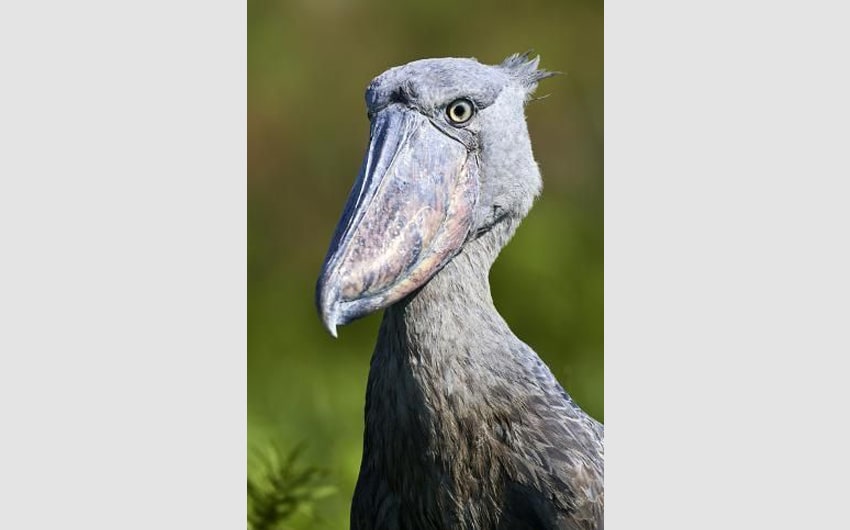
Image Source: Pinterest
The shoebill is a large, prehistoric-looking bird known for its enormous, shoe-shaped beak, which is one of the most powerful among birds. Here’s what makes the shoebill’s beak so extraordinary:
- Crushing Power: The shoebill’s massive beak is incredibly strong, capable of crushing the bones of large prey such as fish, reptiles, and even small mammals. This strength is essential for handling the large, tough prey they often encounter.
- Specialized for Big Prey: Unlike many other birds, the shoebill’s beak is designed to handle big, slippery prey like lungfish and catfish. The wide gape and hooked tip allow them to grip and subdue their prey effectively.
- Silent Stalker: Shoebills are known for their stealthy hunting style. They often stand still for long periods, waiting for prey to come close before delivering a powerful strike with their beak.
Shoebills are native to the swamps and wetlands of central tropical Africa, particularly in countries like Uganda, Sudan, and Zambia. Their large beaks are perfectly suited to the dense, marshy environments where they hunt.
16. Flamingo

Image Source: Pinterest
Flamingos are iconic wading birds known for their vibrant pink feathers and uniquely shaped long, curved beaks. These beaks are highly specialized for their unique feeding style. Here’s what makes the flamingo’s beak so distinctive:
- Filter Feeding: Flamingos have long, downward-curving beaks that are perfectly adapted for filter feeding. They feed by turning their heads upside down in the water, using their beaks to filter out small organisms like algae, crustaceans, and plankton from the mud and water.
- Comb-Like Structures: Inside their beaks, flamingos have comb-like structures called lamellae, which help them trap and sift through food particles. This specialized feeding mechanism allows them to efficiently extract nourishment from their aquatic environment.
- Coloration Connection: The small crustaceans that flamingos consume contain carotenoids, which are responsible for their pink coloration. Their beaks play a crucial role in maintaining this vibrant hue by enabling them to consume the necessary food sources.
Flamingos are found in parts of Africa, South America, the Caribbean, and southern Europe. They typically inhabit shallow lakes, lagoons, and mangrove swamps where their long beaks are essential for their filter-feeding lifestyle.
17. Great Hornbill
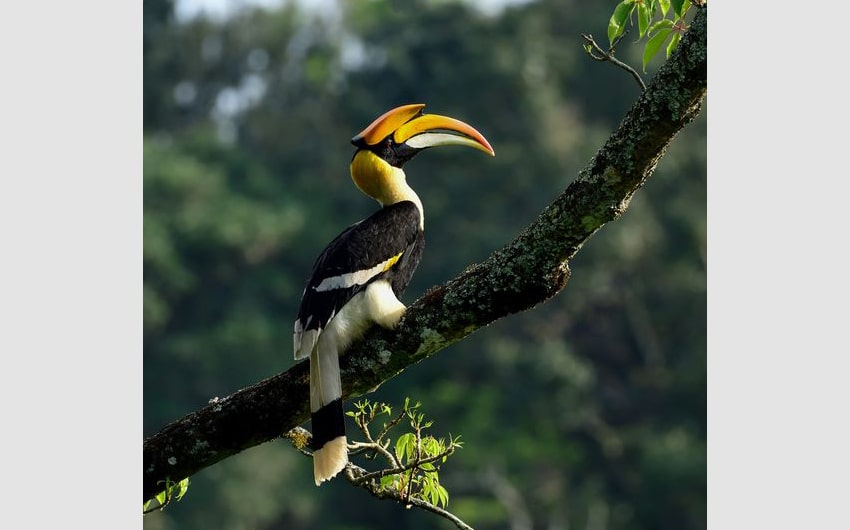
Image Source: Pinterest
The great hornbill is a striking bird known for its large, curved beak and prominent casque, which together create a distinctive silhouette. Here’s what makes the great hornbill’s beak so remarkable:
- Fruit Gathering: The great hornbill’s long, curved beak is perfectly adapted for reaching and plucking fruit from trees. The strong, curved shape allows the bird to grasp and manipulate fruit with ease, which is essential for its largely frugivorous diet.
- Casque Functionality: The prominent casque on top of the beak, although large and hollow, plays a role in amplifying calls and possibly in sexual selection. It also adds strength to the beak, making it more effective for both feeding and defense.
- Courtship Displays: During courtship, male hornbills use their beaks and casques in elaborate displays to attract mates. These displays are not only visual but also involve the exchange of food, which is passed from male to female using their beaks.
Great hornbills are found in the tropical forests of Southeast Asia and the Indian subcontinent. Their long, strong beaks are crucial for their survival, enabling them to forage effectively in the dense forest canopy.
18. Anhinga
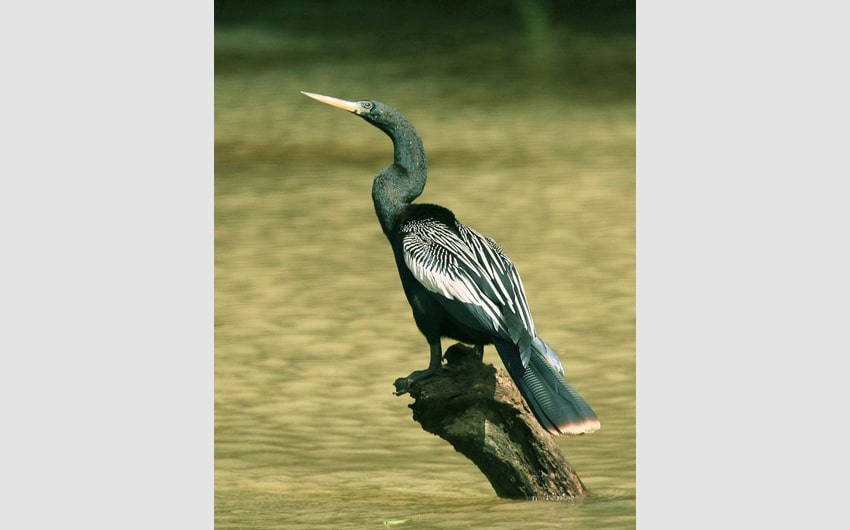
Image Source: Pinterest
Anhingas, often known as “snakebirds” due to their long necks and snake-like appearance when swimming, are equipped with long, sharp beaks that are perfectly suited to their aquatic hunting lifestyle. Here’s what makes the anhinga’s beak so effective:
- Spearing Fish: The anhinga’s beak is long, straight, and sharply pointed, designed for spearing fish with precision. Anhingas hunt by diving underwater, then using their beaks to stab fish before bringing them to the surface.
- Drying Behavior: Unlike other water birds, anhingas do not have waterproof feathers, so after swimming, they often spread their wings to dry. Their beaks, meanwhile, are crucial for balancing and arranging their feathers during this drying process.
- Versatile Hunting: While fish are their primary prey, anhingas’ beaks are also effective for catching other aquatic animals, such as amphibians and small reptiles, making them versatile hunters.
Anhingas are found in warm, freshwater environments, particularly in the Americas and Africa. They typically inhabit rivers, lakes, and marshes, where their long beaks are essential for their underwater hunting techniques.
19. Black Skimmer

Image Source: Pinterest
The black skimmer is a unique seabird known for its distinctive long beak, which features a lower mandible longer than the upper. This unusual beak shape is perfectly adapted for its specialized feeding technique. Here’s what makes the black skimmer’s beak so special:
- Skimming for Food: Black skimmers feed by flying low over the water with their beaks open, using the elongated lower mandible to skim the water’s surface. As they fly, their beak touches the water, snapping shut when it encounters a fish or other prey.
- Nighttime Feeding: Skimmers often feed at dawn, dusk, or during the night when their prey is closer to the water’s surface. Their long beaks are crucial for detecting and catching prey in low-light conditions.
- Adapted for Precision: The unique structure of the black skimmer’s beak requires precise coordination, as the bird must fly at just the right height and speed to successfully catch prey. This precision makes their feeding style one of the most specialized among birds.
Black skimmers are found along coastlines, estuaries, and rivers, primarily in the Americas. Their long beaks are essential for their specialized skimming feeding method, which sets them apart from other seabirds.
20. Jabiru
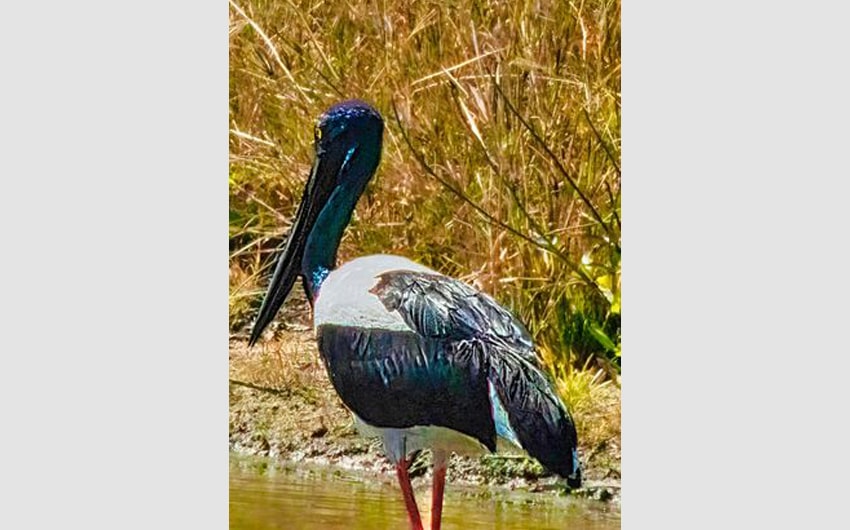
Image Source: Pinterest
The jabiru is a large stork species known for its imposing size and equally impressive long, thick beak. This powerful beak is central to the jabiru’s role as a top predator in its habitat. Here’s what makes the jabiru’s beak so remarkable:
- Powerful Predator: The jabiru’s beak is long, robust, and slightly curved, designed for catching and handling large prey, including fish, amphibians, and even small mammals. Its strength allows the jabiru to overpower and consume prey that other birds might struggle with.
- Opportunistic Feeding: Jabirus are opportunistic feeders, and their beaks are versatile enough to handle a wide range of prey, from aquatic animals to carrion. This adaptability ensures they can find food in various environments.
- Nesting and Defense: Jabirus also use their beaks to build large, sturdy nests in tall trees and to defend their territory from potential threats. The beak’s size and power make it an effective tool for both construction and protection.
Jabirus are found in Central and South America, particularly in wetland areas such as the Pantanal and along major rivers. Their long beaks are perfectly suited to their role as dominant predators in these rich ecosystems.

